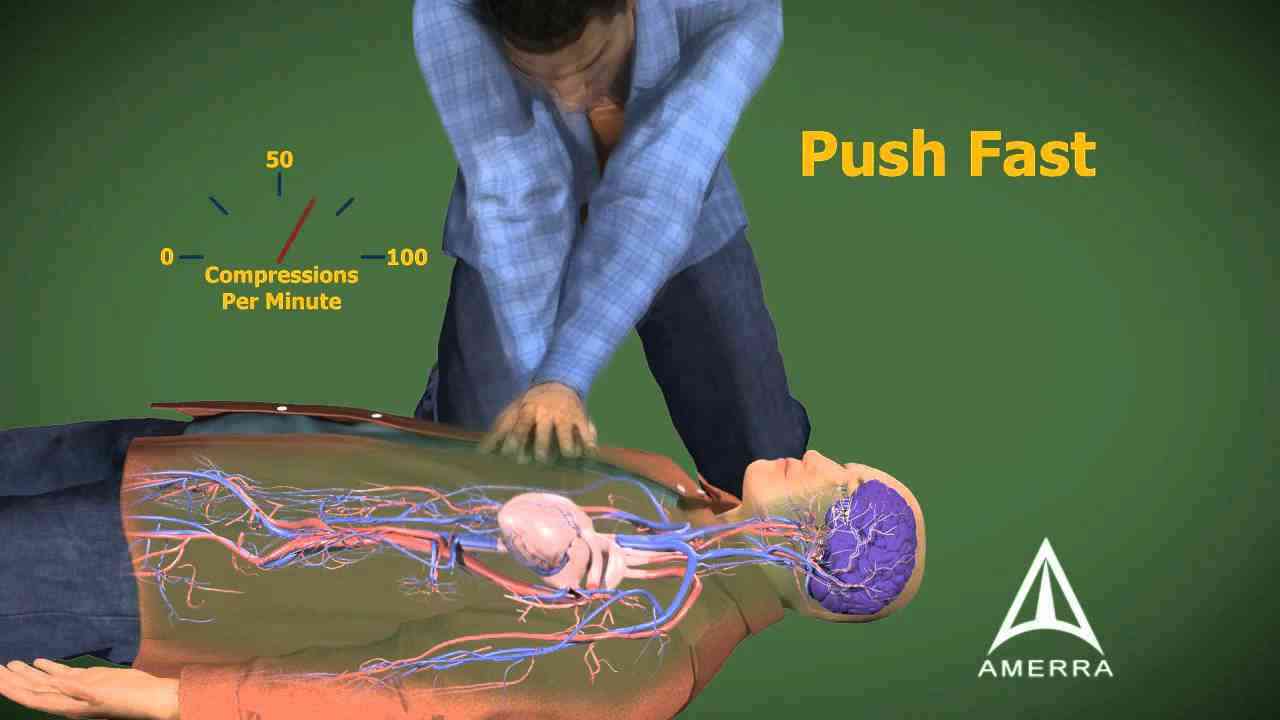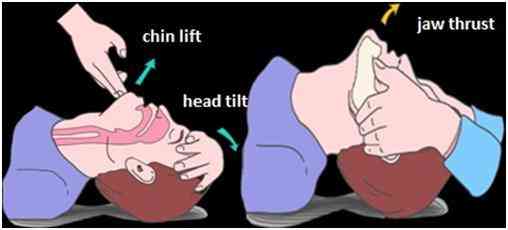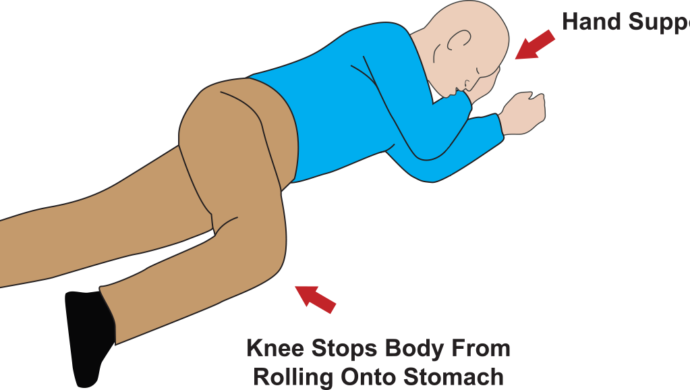CPR or better known as Cardiopulmonary Resuscitation is a life saving emergency technique that is used to save a person’s life when the blood flow to the body has stopped or the person has stopped breathing. CPR is a basic emergency procedure, but most important of all the medical techniques. It is most commonly used in cases when the heart has stopped working (cardiac arrest), near drowning, drug reactions or overdose, electric shocks, neurologic disease or any kind of trauma. In newborn and infants it can be a life savior when there is sudden respiratory (breathing) failure due to sudden infant distress syndrome or severe chocking.
It helps in reviving the blood circulation and breathing and provides oxygen to the heart, brain and other vital organs of the body. If oxygen doesn’t reach the brain cells, brain can die in less than 8-10 minutes so, you now know how much important is proper blood supply to each and every organ of our body.
However, trained professionals and advanced cardiac life support measures might not be available everywhere and every time and the mishap can happen anywhere with any person, hence, people should have a basic knowledge about it so that the affected person gets immediate and timely help before appropriate medical help arrives.
CPR consists of chest compressions and rescue breathing which if given appropriately can greatly increase the chances of survival of the victim. It has two versions:
- When CPR is done by a trained person: In this, CPR is begun by chest compressions followed by rescue breathing at a ratio of 30:2 i.e. 30 chest compressions followed by 2 mouth to mouth breaths. Chest compressions should be done at a rate of 100-120/min and to a depth of at least 2 inches or 5 cms for an average adult not exceeding 2.4 inches or 6cms.
- When CPR needs to be done by an untrained person: ‘hands only’ CPR is done that is only chest compressions as stated above should be done without rescue breathing.
Step by step guide for CPR
CPR should be done only when the victim is unconscious and has stopped breathing or not breathing normally. Before starting CPR first and the foremost thing is to check whether the victim is responding to your call or not. Call out aloud “are you okay?” or shake the victim’s shoulder. In case of an infant, tap the foot and check for responsiveness. If the victim is not responding immediately call for the medical emergency number of your respective locality and start doing CPR.
Earlier, according to the guidelines given by American Heart Association (AHA) rescue breaths were performed earlier than chest compressions. However many rescuers hesitated to perform mouth to mouth rescue breaths on the victim and so this lessened the chances of providing complete emergency medical relief to the patient. As we know that time is extremely critical in such patients because each minute when the victim goes without CPR his/her chance of survival decreases by 10%. Hence, it was then postulated by AHA that chest compressions (C) should be performed first followed by airway maintenance(A) and mouth to mouth rescue breaths(B) {C-A-B rather than A-B-C}. This update drastically increased the success rate of CPR and also the survival rate of the victim.
Steps for CPR for adults, children and infants vary slightly and have been described separately below.
C- Chest compressions
For adults and children older than 8 years of age:
- Place the victim on a firm flat surface with back towards the surface. The rescuer should kneel down at the side of the victim and arms and elbows fully extended.
- The heel of one hand is placed at the center of the chest between the nipples. The other hand is placed over it, interlocked and chest compressions are started keeping in mind that the chest should be compressed at least 2 inches or 5 cm. For proper chest compression full weight of the rescuer’s body should be placed over the hand and do it hard and rapid. At least 30 chest compressions should be given in 15-18 seconds if it is followed by rescue breathing else at least 100-120 chest compressions should be given in a minute.
- With each compression keep a note whether chest is rising or not.
For children more than 1 year of age and until 8 years:
According to AHA the procedure remains same as applied for adults and adolescents except that chest compressions can be done using one hand.
For a baby more than 4 weeks old and up to a year:
- Chest compressions are done using 2 fingers and up to 1.5 inches or 4 cm only. The position of chest compression is just below an imaginary line joining the 2 nipples of the infant. Rest the procedure is same as for the adult.


A- Airway
- Open the airway. Place one hand over the patient’s forehead and tilt the head backwards by applying pressure. At the same time place other hand underside the center of the patient’s chin and lift the chin slightly upwards and forward. This is known as head tilt chin lift maneuver.
- Look if the victim has started breathing. If breathing has started get the patient to recovery position else start rescue breaths or mouth to mouth breathing immediately.
B- Breathing
- Two rescue breaths are given after 30 chest compressions.
- The nose is pinched shut. The rescuer should take a normal breath and then should place his/her mouth over the victim’s mouth such that a seal is formed. Give one breath to the victim for a second and look for chest rising. If the chest rises give another breath. If chest doesn’t rise, perform head tilt chin lift maneuver again and give rescue breaths.
- 30 chest compressions and 2 rescue breaths make one cycle of CPR. Continue with the next CPR cycle until chest rises and breathing resumes or emergency medical help arrives.
In rescue breathing for infants less than 1 year of age, the mouth and nostrils are covered with a mask and the strength of the cheeks are used to provide gentle puffs of air into the infant’s mouth. It should be kept in mind the infant requires little air as compared to an adult so each rescue breathe should be small and lasting for a second. Rest all the procedure is similar to CPR done in adults.
If AED or automated electrical device becomes available, it is placed over the patient’s chest and one shock is given followed by one cycle of CPR and then again a shock is given and the process is continued until there are signs of movement or medical personnel take over.
Whenever you note that the patient has started breathing but still unconscious, it is mandatory to place the patient in a recovery position.

Recovery position:
Recovery position is used to keep the airway open and clear in an unconscious person who is still breathing. In an unconscious patient due to loss muscle tone, the tongue blocks the airway hence the victim must be placed in the recovery position to maintain proper airway. Also, this position protects the victim from inhaling the stomach contents which can come up as the food pipe remains open when the patient is unconscious and in lying position.
The victim is turned to his/ her side and the head is tilted downwards and supported with one of the hands i.e. placed in a dependent position. Whichever side the victim is rolled over it should be made sure that the knee of opposite leg is bent to stabilize the victim. For example if the patient is turned to his/her left then the knee of the right leg is bent in a running position. Knee stops the patient from rolling onto the stomach.
In a pregnant lady it should be kept in mind that the lady should always be placed in her left lateral position so that the fetus inside gets proper oxygen and doesn’t press on the major blood vessels of the abdomen.
If patient has stopped breathing or heart has stopped working due to chocking then the foreign agent has to be removed first from the wind pipe before starting CPR. Chocking is most commonly seen in small children and infants but can happen in adults too.
If there is partial breathing, let the person cough continuously if he/she is able to do it forcefully. If the person is chocking, unable to cry, talk or laugh or breathing has stopped then a “five and five” approach as recommended by American red cross society is applied.
- Give 5 back blows: Stand to the side and just behind a choking adult. For a child, kneel down behind. One arm is placed across the baby’s chest for support. The infant is bent over at the waist so that the upper body is parallel with the ground. Five separate back blows are delivered between the infant’s shoulder blades with the heel of the hand.
- Give 5 abdominal thrusts: also known as the Heimlich maneuver. The person should stand behind the victim and the victim is slightly leaned forward. A fist is made with one hand. The arms are wrapped around the waist and positioned slightly above the navel, just below the center of the ribs. The fist is grasped with the other hand and the abdomen or stomach is pressed hard with a quick, upward thrust as if trying to lift the person up.
- Alternate between 5 blows and 5 thrusts until the blockage is dislodged.

in infants

Heimlich maneuver in adults
Start with CPR after the foreign agent has been dislodged and the victim has not resumed with breathing. If breathing gets revived place the victim in recovery position.
So, this was all about cardiopulmonary resuscitation or CPR. The article was an attempt to educate people with the basic life saving procedure that can increase the chances of survival of the victim in the absence of any trained medical personal and advanced medical equipment.




